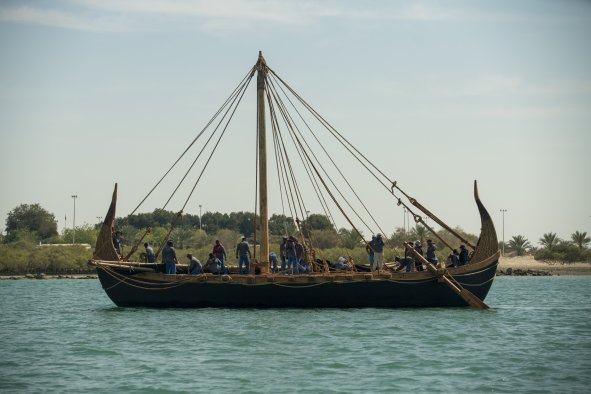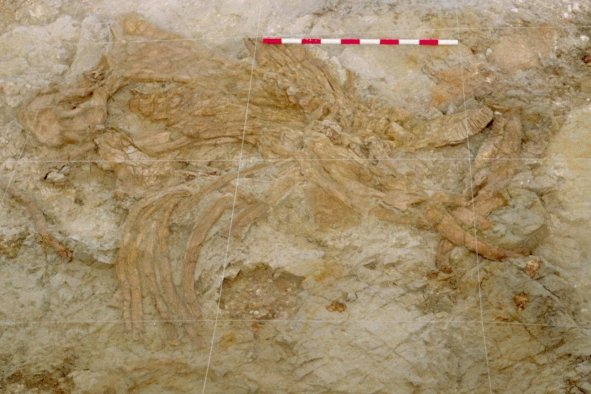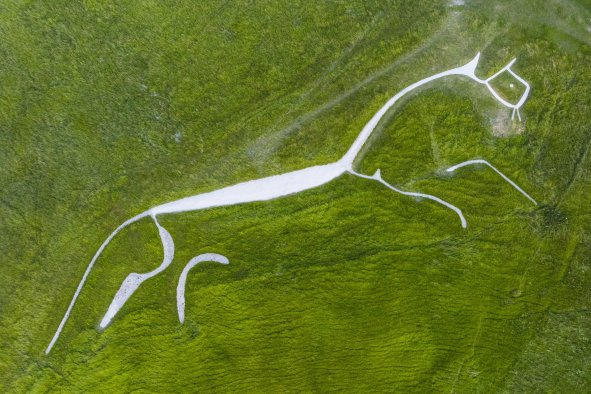The remains of an ancient Roman villa measuring more than 200 feet in length have been uncovered in the United Kingdom.
The villa, thought to date to the 2nd century, lies in the county of Leicestershire in the East Midlands of England, although archaeologists are keeping its exact location under wraps to deter illicit metal detecting at the site.
Villas were high-status rural dwellings—the Roman equivalent of a large country estate. The remains of several have been found across the island of Britain, which was mostly occupied by Rome from A.D. 43 to A.D. 410.
"The villa in Roman Britain could fulfil a variety of functions. It could be a way for a person to display their wealth and Roman identity—like a country house in later periods. However, they also frequently fulfilled an economic function, acting as centers at the heart of large agricultural estates," Philippa Walton, a lecturer in Roman archaeology, at the University of Leicester, told Newsweek.
The field in which the villa is located has yielded Roman-era material for many years. But it was not until 2019 that aerial photography revealed cropmarks that appeared to represent a Roman villa complex.
Earlier this year, a geophysical survey of the site was conducted by specialists with Time Team, a British TV show focused on archaeological investigations.
Geophysical surveys enable researchers to understand what lies beneath the ground where potential archaeological remains may be found using non-invasive techniques.
"The magnetic survey revealed a complex landscape of features including ring ditches and field systems, while the ground penetrating radar (GPR) mapped the footprint of the building itself," John Gater of Time Team and director of SUMO GeoSurveys, who co-funded the geophysical survey, said in a University of Leicester press release.
Following the geophysical survey, experts from University of Leicester Archaeological Services (ULAS) led a two-week excavation of the site in May. This dig was run as a field school for first-year undergraduate students from the University's School of Archaeology and Ancient History, providing many with their first experience of a real excavation.
"This year's field school was tremendous opportunity for Leicester's students to get to grips with archaeological excavation on an exciting new Roman site. They've all come away from the experience with lots of new skills and really importantly, helped to increase our understanding of how people lived in Roman Leicestershire," Walton said in the press release.
This excavation, which will feature in a future video on Time Team's YouTube channel, represents the first time that archaeologists have physically investigated the site, with the students uncovering a number of remains.
"Working with Time Team we were able to add more detail to the picture by adding geophysical survey and sample excavation to get a better understanding of the dates and levels of preservation of the archaeology," ULAS Deputy Director John Thomas told Newsweek.
The combination of the recent geophysical survey and the excavation identified a roughly 230-foot long villa building with two wings.
"The stone foundations were substantial suggesting the building had at least two floors, while fragments of wall plaster and mosaic tiles indicate it was decorated in Roman style," Walton told Newsweek.
The team excavated within the villa, identifying a room ending in an apse (a kind of semicircular recess), as well as a corridor and other rooms with mosaic floors.
"In Roman villa complexes, apsidal-ended rooms were usually reserved for dining or the reception of guests," Walton said.
Outside the villa, the team identified a series of ditches. Some of these were clearly aligned with the villa and probably represented boundary features, while others may relate to earlier prehistoric settlement. They also documented a "rather mysterious" stone-lined feature, which may have been used for storage.
"When first uncovered, we suspected that it was a Roman well, but excavation showed that it was a relatively shallow stone and brick-lined rectangular feature. The students excavated it and no finds were recovered from it, so its function is a bit of a mystery," Walton said.
A large amount of animal bones were recovered from ditches at the site, suggesting that animal husbandry played a role in the life of the villa, according to Walton.
Beside the animal bones, the team found surprisingly few objects at the villa site, which could partly be the result of plow damage.
"The Romans made and used a lot of stuff—from pottery vessels, to brooches to coinage and these can often tell us a lot about the people who lived on a particular site," Walton said.
But at this site, the team had to rely on tiny clues, like fragments of pottery vessels and painted wall plaster to gain an understanding of life in the villa.
"For example, we found fragments of Samian pottery dating to the second century. This was used as tableware in Roman households and was made in southern and central Gaul. Some fragments of wall plaster were decorated with blue painted stripes—something which is quite unusual in a Romano-British context—this might say something about the taste or origins of the occupant of the villa," Walton said.
"The villa provides us with an insight into the development and organization of the rural landscape of Roman Leicestershire. It helps us understand how agricultural resources were being exploited in the region and about the sorts of people who benefited from this exploitation, using their wealth to build and decorate their properties," Walton said.
Three years ago, ULAS archaeologists announced the discovery of another Roman villa, located in the neighboring county of Rutland, featuring an extraordinary mosaic depicting a scene from the legendary Trojan War from ancient Greek mythology.
Do you have a tip on a science story that Newsweek should be covering? Do you have a question about archaeology? Let us know via science@newsweek.com.
Disclaimer: The copyright of this article belongs to the original author. Reposting this article is solely for the purpose of information dissemination and does not constitute any investment advice. If there is any infringement, please contact us immediately. We will make corrections or deletions as necessary. Thank you.




